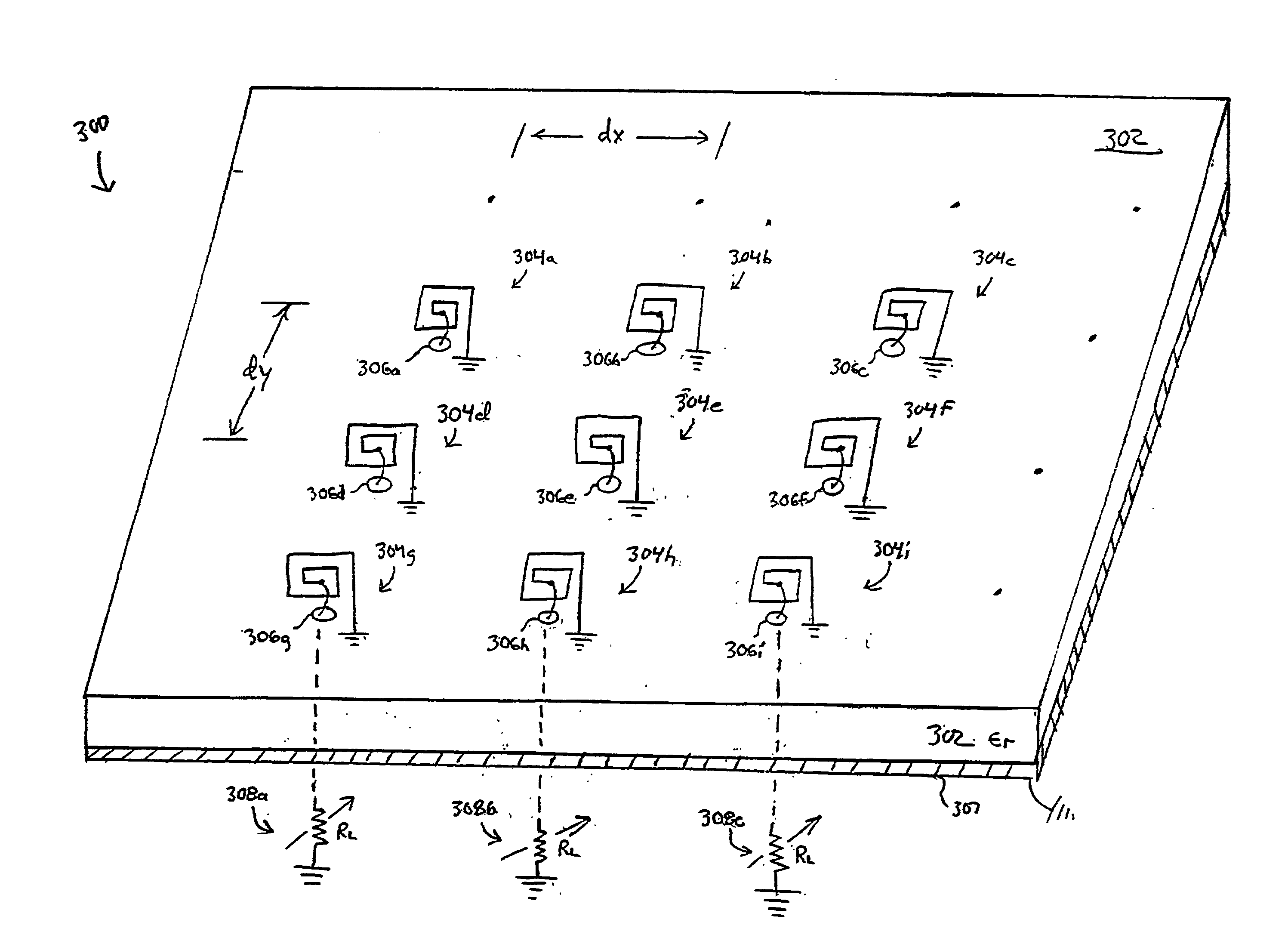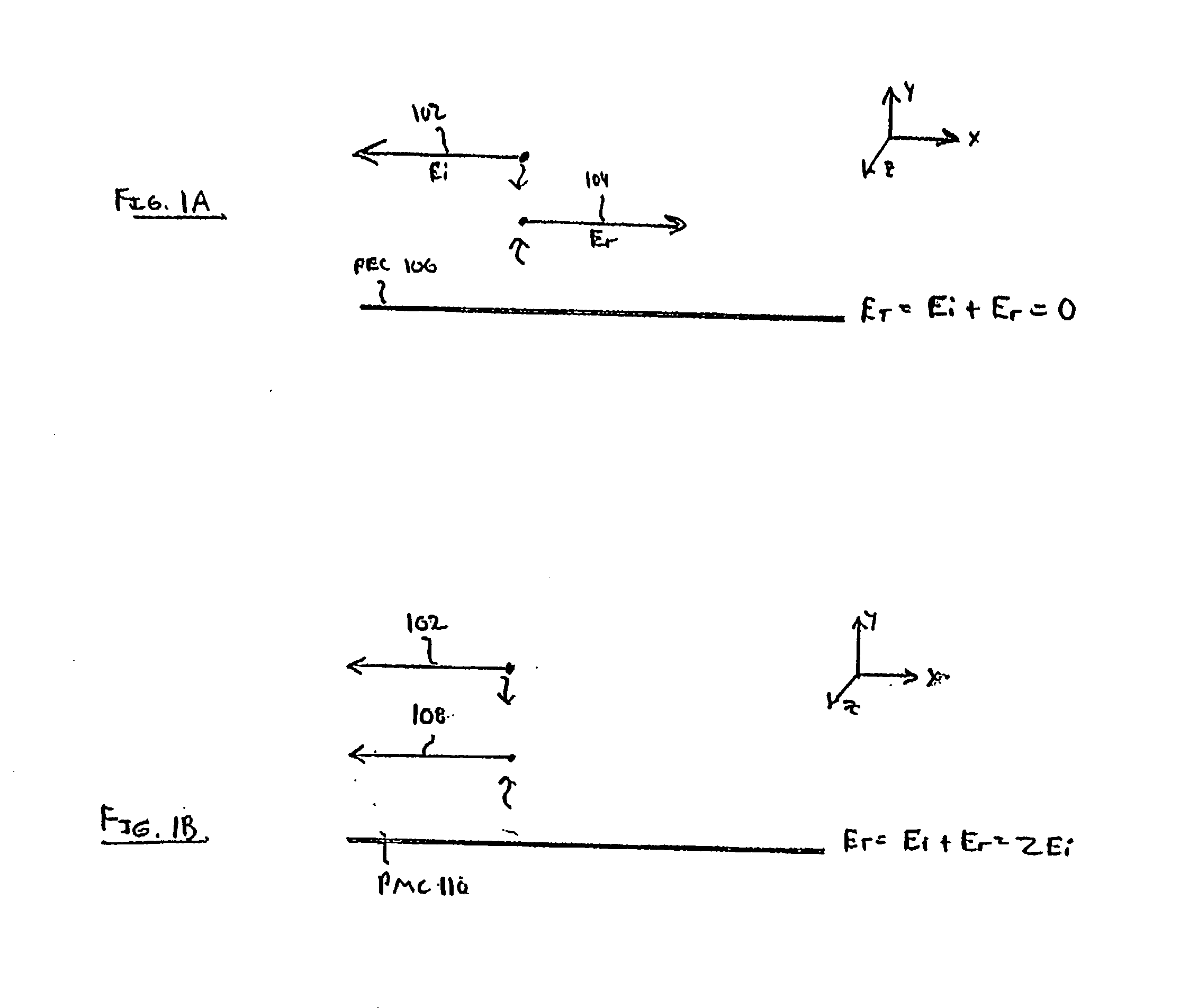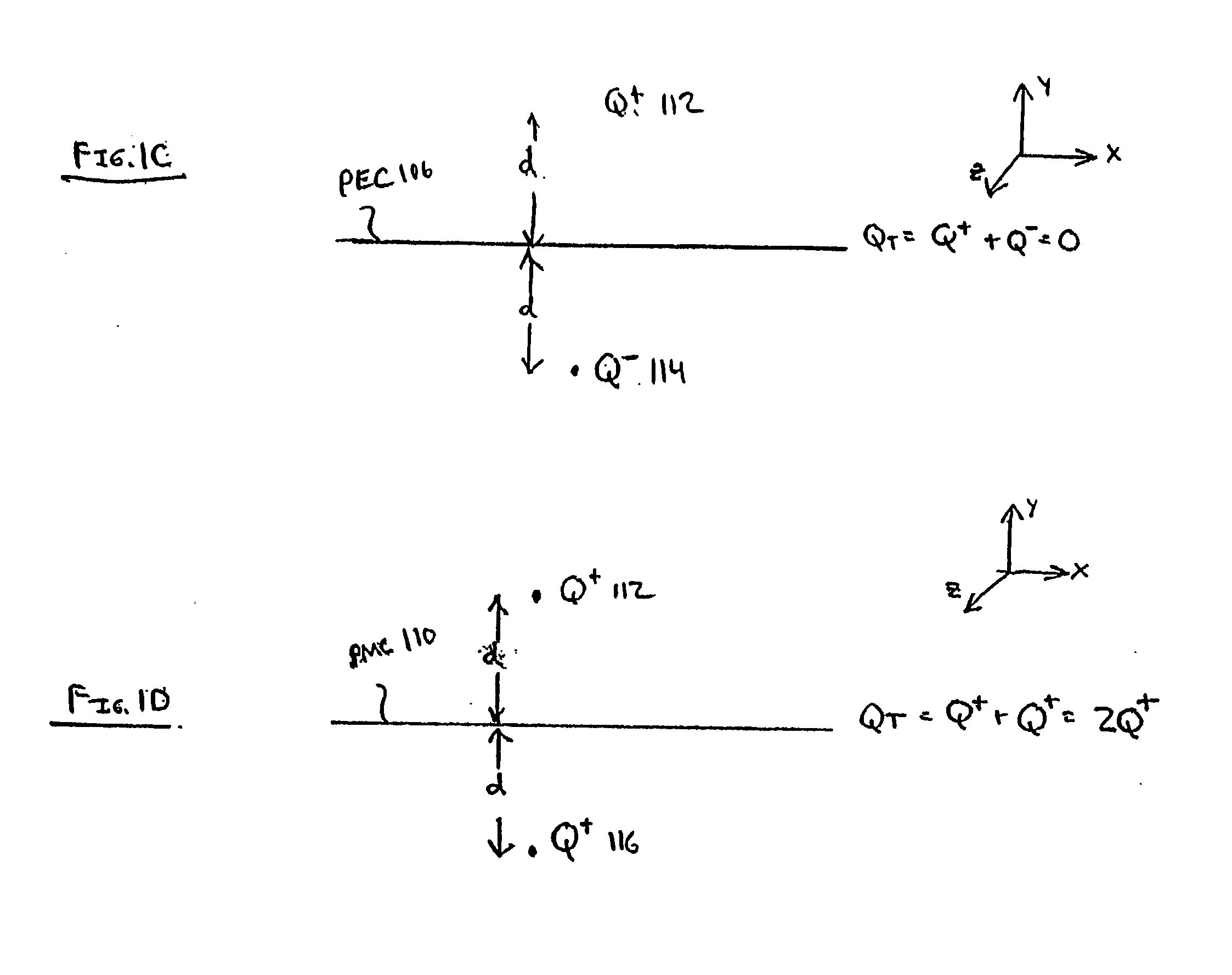Apparatus for generating a magnetic interface and applications of the same
a magnetic interface and apparatus technology, applied in the field of magnetic interfaces, can solve the problems of requiring expensive assembly techniques for the integration of discrete inductors onto the substrate, requiring less expensive printed inductors, and requiring a trade-off in circuit footprin
- Summary
- Abstract
- Description
- Claims
- Application Information
AI Technical Summary
Problems solved by technology
Method used
Image
Examples
Embodiment Construction
[0047] 1. Properties of Electric and Magnetic Conductors
[0048] Before describing the invention in detail, it is useful to describe some properties of electric and magnetic conductors. FIG. 1A illustrates a perfect electric conductor (PEC) 106, and FIG. 1B illustrates a perfect magnetic conductor (PMC) 110. When an incident electric field (E.sub.1) 102 hits the PEC 106, a reflected electric field (E.sub.r) 104 is generated that is equal in amplitude and opposite in phase. Therefore, at the surface of PEC 106, the total electric field (E.sub.T) is 0, which is consistent with a short circuit. When the incident electric field (E.sub.1) 102 hits the PMC 110, a reflected electric field (E.sub.r) 108 field is generated that is equal in amplitude and also equal in-phase with the E.sub.1 102. Therefore, at the surface of the PMC 110, the total electric field is double that of the E.sub.1 102.
[0049] Referring to FIG. 1C, when a charge Q.sup.+ 112 is placed at a distance d above the PEC 106, t...
PUM
 Login to View More
Login to View More Abstract
Description
Claims
Application Information
 Login to View More
Login to View More - R&D
- Intellectual Property
- Life Sciences
- Materials
- Tech Scout
- Unparalleled Data Quality
- Higher Quality Content
- 60% Fewer Hallucinations
Browse by: Latest US Patents, China's latest patents, Technical Efficacy Thesaurus, Application Domain, Technology Topic, Popular Technical Reports.
© 2025 PatSnap. All rights reserved.Legal|Privacy policy|Modern Slavery Act Transparency Statement|Sitemap|About US| Contact US: help@patsnap.com



